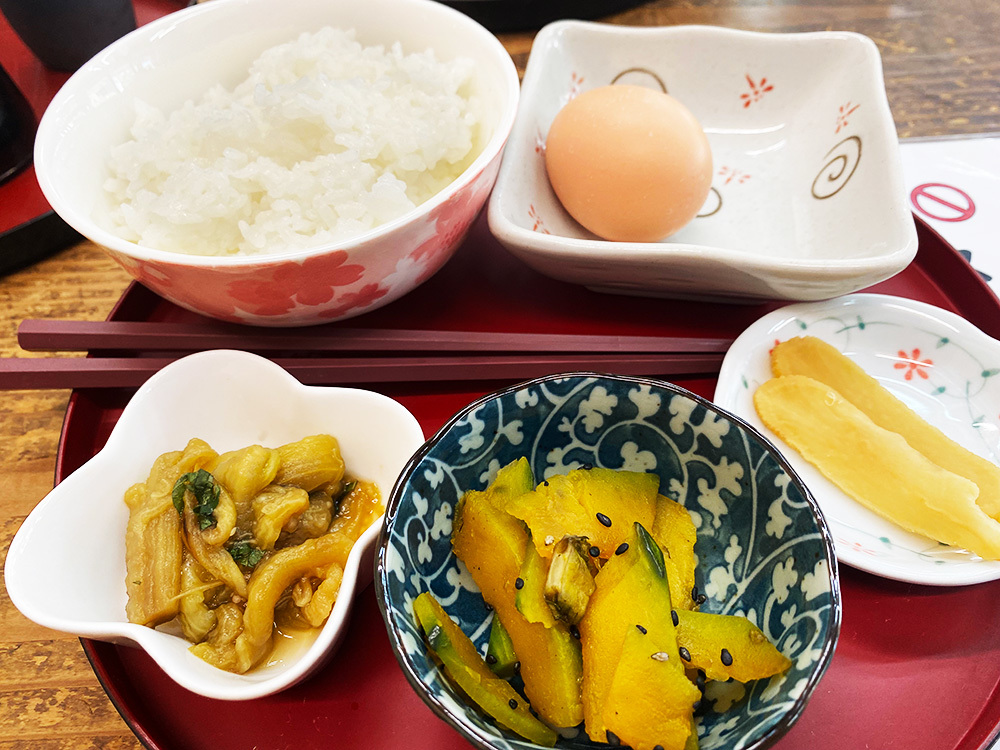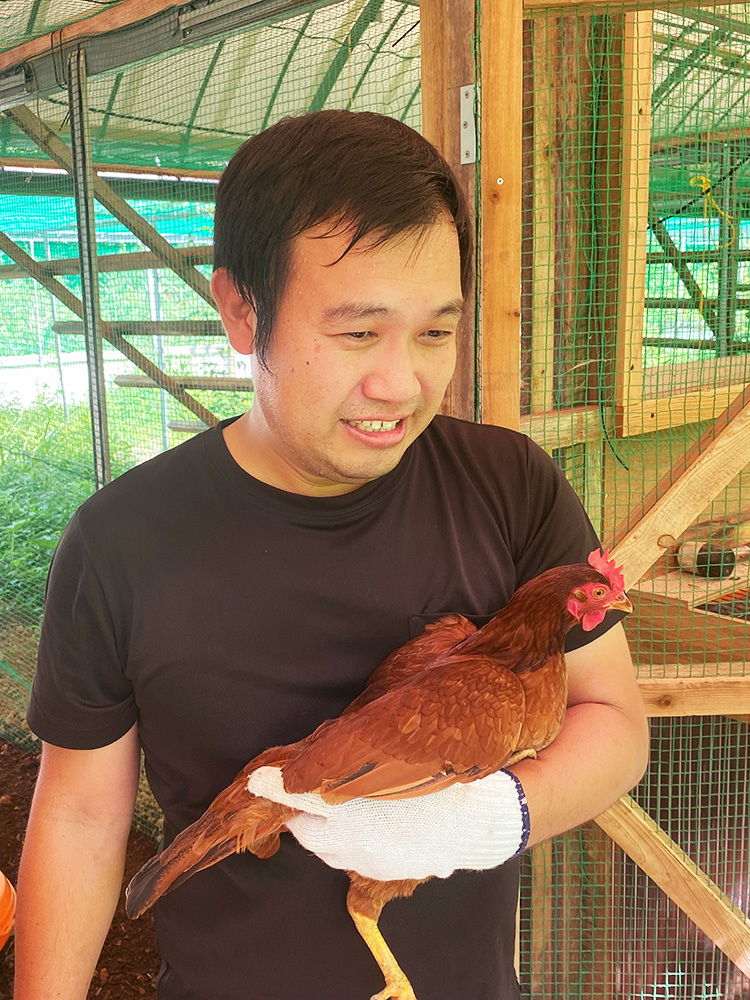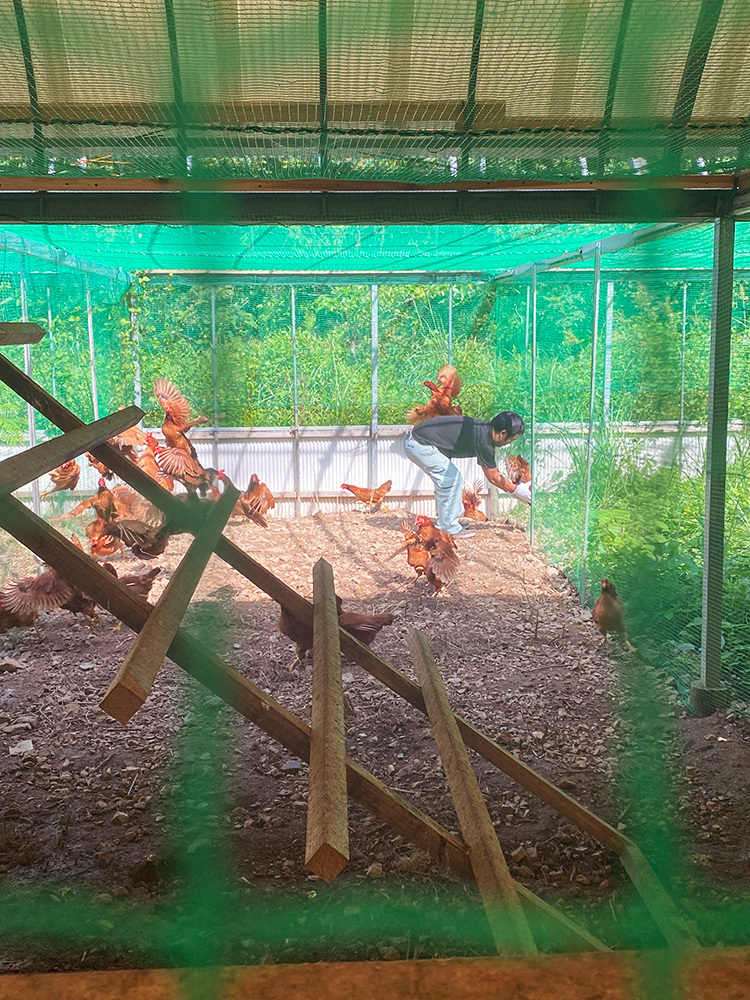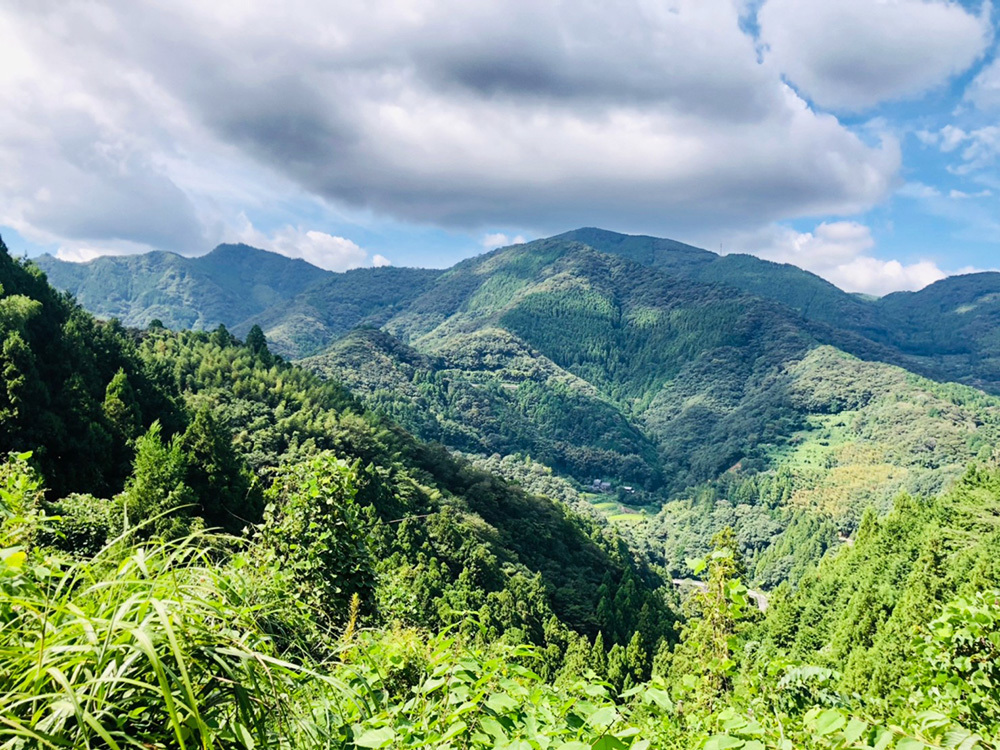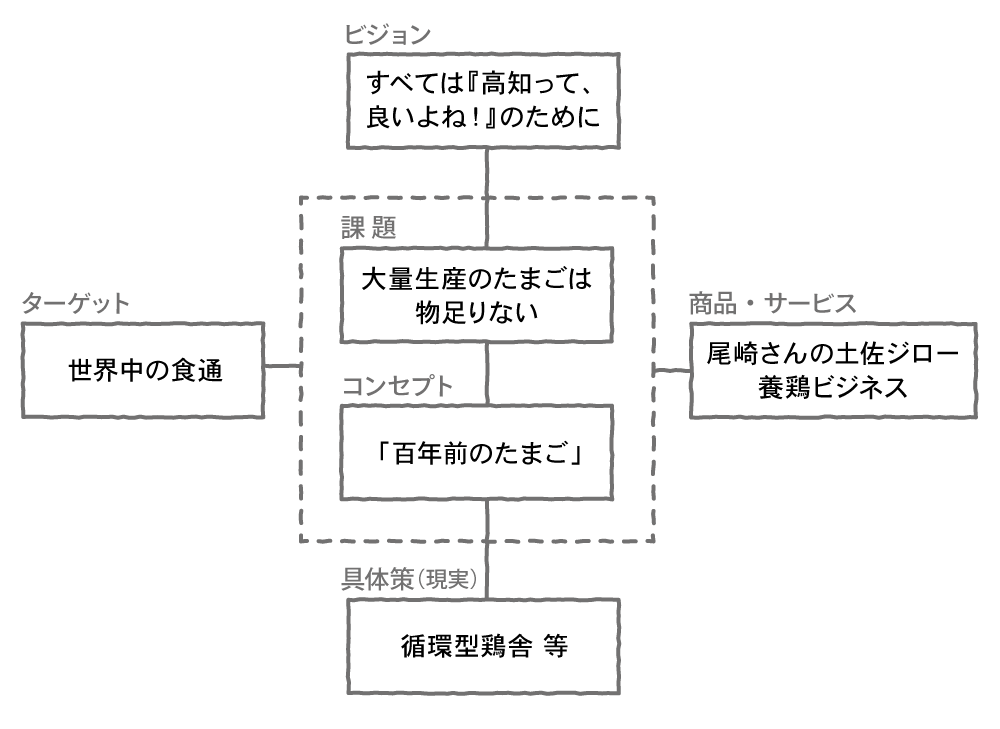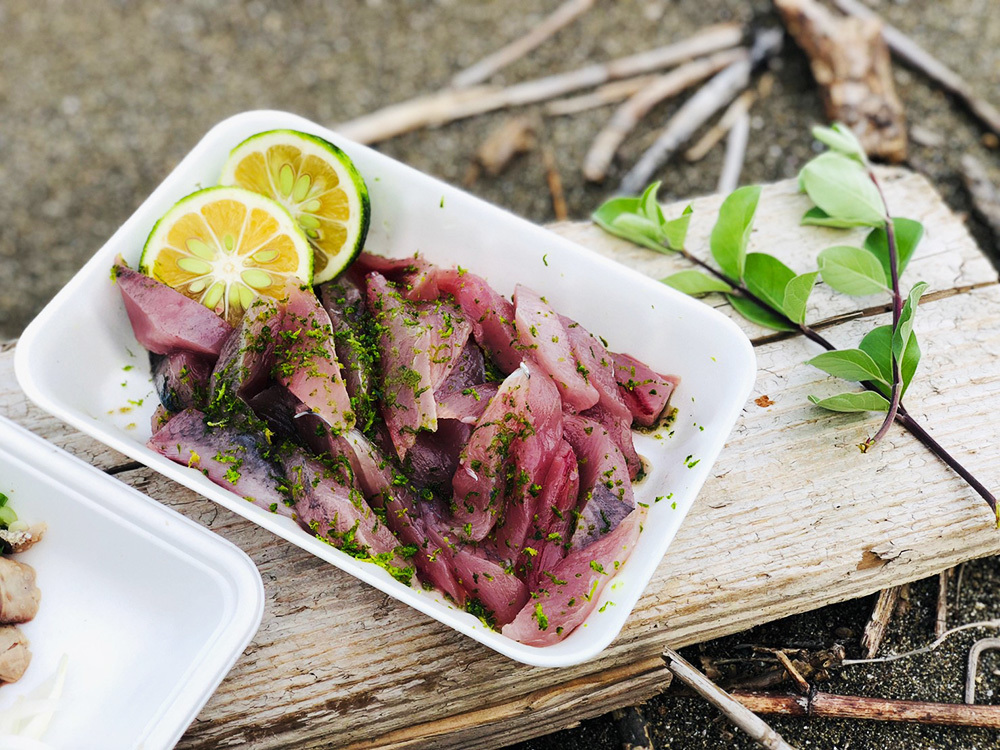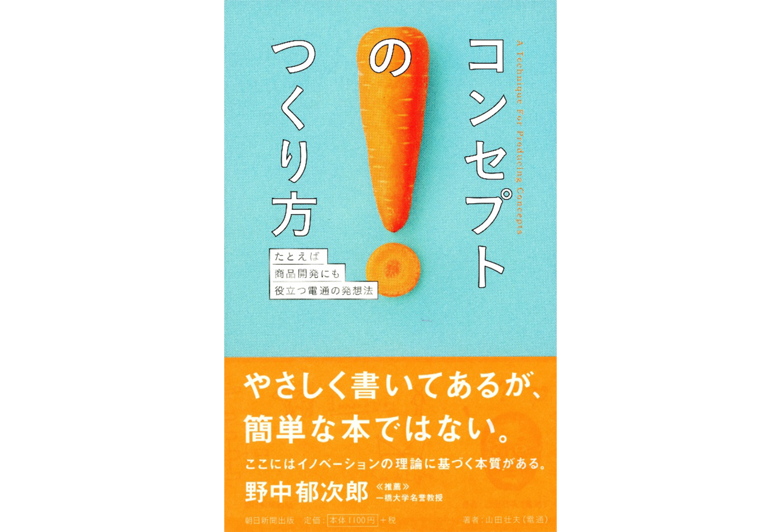Young Mr. D is currently training in Kochi to challenge himself in growing ginger in Lithuania. When I asked about his recent activities, he replied, "Have you ever tried young bonito? It's the juvenile fish of the bonito caught from late August to September. Squeeze in some Buddha's hand citrus, and it's the best. It spoils quickly, so it's a local delicacy you can only get right there!" I couldn't sit still and flew straight there.
With visions of unseen sashimi filling my mouth, I landed at the airport. D drove us to a diner deep in the mountains and ordered "tamago kake gohan" (raw egg over rice). Reluctantly, I took a bite. "Wow... this is amazing!"
After the meal, we ventured deeper into Tosa-yama, renowned for organic farming. Waiting for us there was Mr. Akinori Ozaki, a farmer raising Tosa Jiro, Kochi's representative local chicken breed.
Having transitioned from a role in store development for a famous restaurant chain just a few years prior, Mr. Ozaki continues to battle through the harsh environment of the pandemic. Yet, each of his words carried such strength that I was instantly drawn into his story.
The first thing he taught us was that "chicken farming is soil farming." As the term "gizzard" suggests, chickens without teeth use small stones stored in their gizzards to grind down their food. They also absorb nutrients like minerals directly from the soil itself. That's precisely why creating healthy soil is essential for raising vibrant chickens.
While the massive amounts of chicken manure produced daily are sometimes treated as industrial waste, Mr. Ozaki uses naturally occurring bacteria to break it down. He then plows it back into the soil to enrich it, and the weeds that grow from it become feed again. He creates a natural cycle within the chicken coop.
Then there's the Tosa Jiro breed. While native "Jidori" chickens are typically raised for meat, this breed is dual-purpose, excelling at egg production. Due to an aging producer base, numbers have dropped to about half their peak. Yet Mr. Ozaki sees great potential in the unique flavor of these eggs.
Furthermore, Mr. Ozaki's approach to each individual chicken was one of utmost care, treating them gently and preciously, almost like family, to minimize stress. "Smell these little ones," he said proudly, smiling. "See? They don't smell, do they?" He was completely smitten, like a doting parent. (That said, it was true that the distinctive smell often associated with chicken coops was completely absent.)
Hearing about raising traditional breeds in traditional environments using traditional methods, I intuitively understood that Mr. Ozaki was cultivating "eggs from a hundred years ago" – eggs from before the era of mass production and mass consumption.
Indeed, the eggs I ate at that mountain eatery had hard shells, were small, and didn't have the trendy orange yolks. They simply had a solid, "truly egg-like" flavor. Since Japanese poultry farming has over a thousand years of history, you could even call them "a thousand-year-old egg." I understood he was challenging himself to recapture the "true taste" of Japanese eggs, something lost in modern times.
Furthermore, Mr. Ozaki's dream, which he aims to realize through Tosa Jiro eggs – "Everything is for 'Kochi is great, isn't it!'" – was crystal clear. His "tactical hypothesis" for achieving this (details of which I'll refrain from sharing here) was also extremely well-defined.
I once wrote in this column about Miyazaki Prefecture's world-renowned "Ozaki Beef." Back then, I was struck by how every word spoken by Mr. Ozaki of Ozaki Beef was crystal clear. This time, I had the exact same impression of Mr. Ozaki of Tosa Jiro (sorry for the confusion!). Surely, the day when his efforts bear fruit and are loved worldwide is not far off. (It already seems so popular that it's difficult to purchase online.)
When taking on a challenge, I truly felt the strength of being able to articulate the unseen path you must walk.
Oh yes. I got the young mackerel that evening at a fish shop in the coastal town of Kure. Grated Buddha's hand citrus peel, drizzled with its juice and soy sauce... "Mmmmmmm!" That unique texture and the fresh, spicy citrus aroma.
But the fish shop lady said, "If you want to know the true taste of young yellowtail, you have to come before noon. They spoil that quickly."
Ah, this year's season has already ended. To truly know its essence, I must go again. In any case, Tosa Jiro chicken, Mejiro fish, sun-dried salt, pesticide-free ginger, and more—Kochi was a land overflowing with fascinating ingredients I hadn't known before.
Please, enjoy!


